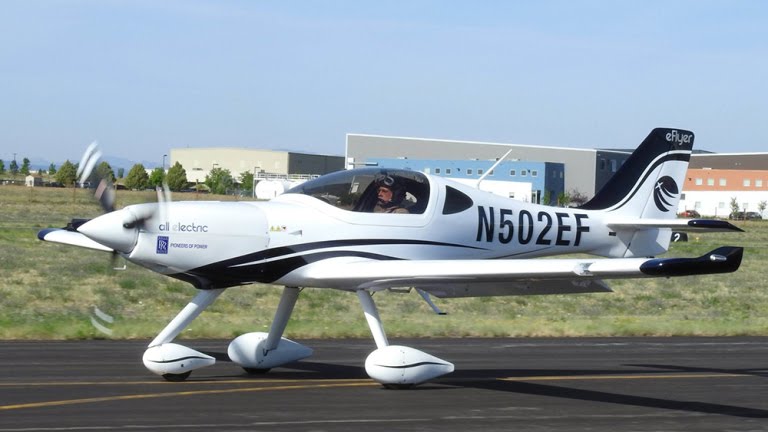
According to Robb Report, Quantum Air plans to launch the world’s first commercial electric urban air mobility (UAM) network next year in Los Angeles with a fleet of Bye Aerospace’s eFlyers. The electric airplanes are labelled under the eCTOL (electric conventional takeoff and landing) category.
LA-based Quantum saw the opportunity to transform the electric planes into inexpensive air taxis that can perform short hops between local airports. The company aims to start the first route sometime in 2021, linking LAX to other Los Angeles-area airports.
Quantum CEO, Tony Thompson, explained the eCTOL fleet is designed to serve intracity travelers who want to measure travel time in minutes, rather than hours on the highway. This project is being called Quantum X.
Unlike the sci-fi quad copters and flying pods of the eVTOL fleet, the eFlyer 2 is a conventional-looking aircraft that uses electric power instead of fossil fuels. They operate at a fraction of the cost of a similar-sized airplane, which makes them attractive as air taxis. The craft will serve as the affordable workhorse in Quantum’s air-taxi fleet.
Meanwhile, Bye Aerospace began developing the eFlyer 2 in 2014 as a cost-effective alternative to conventional trainers, as the demand for trained pilots is expected to rise fivefold over the next 20 years. Following the eFlyer 2, it is developing the four-seat eFlyer 4.
George Bye, CEO of Bye Aerospace, says electric aviation will be the springboard of the new UAM networks. Electric aircraft could also breathe new life into the aviation industry.
The company says the eFlyer2 costs USD23 per flight hour to operate compared to USD110 per hour for the Cessna 172, while maintenance costs for the electric engines are also much lower.
Both Quantum and Bye Aerospace are expecting rapid growth of the eFlyer fleet, so the companies have developed pilot-training programs with OSM, a Norwegian aerospace training company. The programs are expected to take 18 to 20 months for pilot certification.
“Our partnership with OSM means that Quantum pilots will fly commercially in essentially the same aircraft in which they trained,” Thompson says. “Our pilots will be intimately familiar with their aircraft, setting a new standard for safety.”
Quantum, which has a number of former FAA officials and aeronautics engineers on its staff, plans to enter the eVTOL market under its Quantum X program. It also has long-term plans for sub-orbital spaceships to help build colonies beyond the Earth. That project, called Quantum Z, remains confidential.
For visual information

